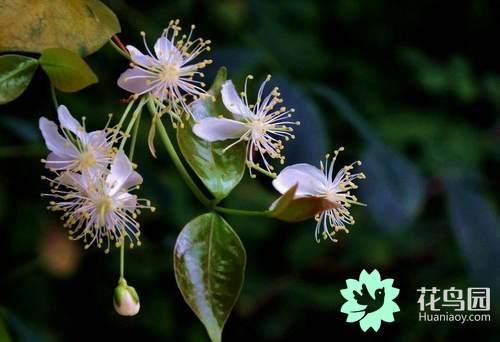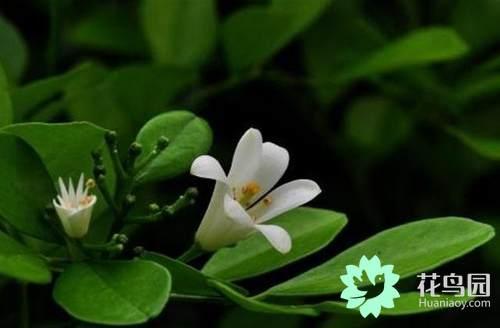Cultivation techniques of Cherry in Central China

The petals of Huazhong cherry are white or pink and have a short flowering period. The fruit is red, edible, good wood texture, can be used for indoor decoration and carving, unique and colorful flowers, for ornamental, with the value of comprehensive development and utilization, but also an ideal ornamental flower and fruit tree species.
Planting
The ground should be leveled before planting. A pit with a diameter of 0.8 meters wide and a depth of 0.6 meters can be dug. The pit is first filled with organic fertilizer of 10 centimeters, and the seedlings are put into the pit so that the roots of the seedlings extend around. After filling the soil with cherry blossoms, lift the seedlings up to make the roots spread out deeply. The planting depth is about 5 cm from the upper layer of the seedling root. water it after planting, fully irrigate it, and set it up with a stick to prevent it from being blown down by strong winds. When planting, 15 kg-25 kg of rotten compost was applied in each pit, and 1 kg to 2 kg of ammonium sulfate per plant in July. After flowering and before sprouting in early spring, it is necessary to cut off dead branches, diseased and weak branches, and avoid pruning coarse branches as far as possible, so as to keep the crown complete.
Watering
After planting, the seedlings are vulnerable to drought. In addition to full irrigation during planting, they should be irrigated once in the next 8-10 days to keep the soil moist without stagnant water. Loosen the soil in time after irrigation, it is best to cover the surface thinly with grass to reduce water evaporation. Within 2-3 years after planting, in order to prevent the trunk from drying, it can be wrapped with straw. However, after 2 to 3 years, the seedlings grow new roots and gradually increase their adaptability to the environment, so it is no longer necessary to cover grass. Watering is determined according to precipitation and soil moisture, and is generally combined with fertilization. It should be sufficient but not excessive, use water to control trees and adjust fertilizer with water. Water should be watered 3-4 times a year. Controllable drip irrigation with water-saving facilities is conducive to the integration of water and fertilizer and improve the utilization rate of fertilizer and water.
Fertilizer application
Cherry blossoms are fertilized twice a year, and acid fertilizer is better. One was winter fertilizer, which applied organic fertilizers such as bean cake, chicken manure and mature fertilizer in winter or early spring, and the other applied quick-acting fertilizers such as ammonium sulfate, ferrous sulfate and calcium superphosphate after falling flowers. General big cherry tree fertilization, you can take the method of hole application, that is, in the crown: the edge of the projection line, dig a circular ditch about 10 cm deep, apply fertilizer. This method is not only simple and beneficial to root absorption, but also increases the diameter and depth of ring trench with the growth of trees. The root distribution of cherry blossoms is shallow, which requires good drainage and ventilation, so people, animals and vehicles should not stand firm in the soil around the tree, especially in the range of root distribution. Pedestrian trampling will weaken the tree, shorten its life, and even cause rotten roots to die.
Pruning
Pruning is mainly to cut off withered branches, overgrown branches, overlapping branches and disease and insect branches. In addition, when many branches grow on the trunk of large cherry blossoms, a number of strong branches should be retained, and the rest should be cut off from the base to facilitate ventilation and light. The pruned branches should disinfect the wound with medicine in time to prevent the invasion of bacteria after rain, resulting in decay. Cherry blossoms after a long period of sun exposure, the bark is easy to aging damage, resulting in decay, it should be removed in time and disinfection treatment. After that, the rotten part was bandaged with rotten leaf soil and carbon powder to promote its normal physiological function.
Flower protection
The period from July to August is the middle stage of cherry flower bud differentiation, through reasonable tree structure, increase ventilation and light transmission, and improve leaf photosynthetic efficiency. Through the technical measures such as opening angle, coring, twisting and moderate drought, the balance of vegetative growth and reproductive growth can be adjusted to provide sufficient nutrition for flower bud differentiation. Late frost is the main harm of flowering. Smoke method, water spraying method and flower protection agent are used to reduce the harm. The flowering period pays close attention to the weather forecast and the change of field temperature.
Excellent fruit
Cultivate high-quality flowers, increase the application of organic fertilizer, thinning fruit and stable yield, spraying foliar fertilizer in fruit growth period, increasing field water capacity in young fruit stage, preventing fruit cracking and preventing abnormal fruit.
Grass
The advantages of growing grass in orchard: improve soil, increase organic matter, improve fertility, regulate soil temperature, maintain moisture, improve orchard micro-ecological environment, increase temperature difference, and improve fruit quality. The mode of growing grass between rows and mulching between plants is generally adopted in orchard. Grass species are mainly white clover, or natural grass can be selected. Cut 2-3 times a year.
- Prev

How to cultivate red fruit with both good appearance and delicacy?
Red fruit is the myrtle family, cherry genus, shrubs or small trees, alias: Brazilian red fruit, sakura, Prunus chinensis. Native to Brazil, there is a small amount of cultivation in the south of China. Red fruit has a beautiful tree shape, dark green leaves, and is common in the four seasons.
- Next

How to plant Jiuli incense and how to maintain it?
Jiuli incense, also known as pepper and Guoshan incense, is a flower native to tropical and subtropical Asia, is a very common green shrub, ornamental plant, so Jiuli incense is in the middle of the home.
Related
- Wuhan Hospital Iron Tree Blooming Result Was Instantly Frightened by the Gardener Master
- Which variety of camellia is the most fragrant and best? Which one do you like best?
- What is the small blue coat, the breeding methods and matters needing attention of the succulent plant
- Dormancy time and maintenance management of succulent plants during dormancy
- Minas succulent how to raise, Minas succulent plant pictures
- What are the varieties of winter succulent plants
- How to raise succulent plants in twelve rolls? let's take a look at some experience of breeding twelve rolls.
- Attention should be paid to water control for succulent plants during dormant period (winter and summer)
- Watering experience of twelve rolls of succulent plants
- Techniques for fertilizing succulent plants. An article will let you know how to fertilize succulent plants.

